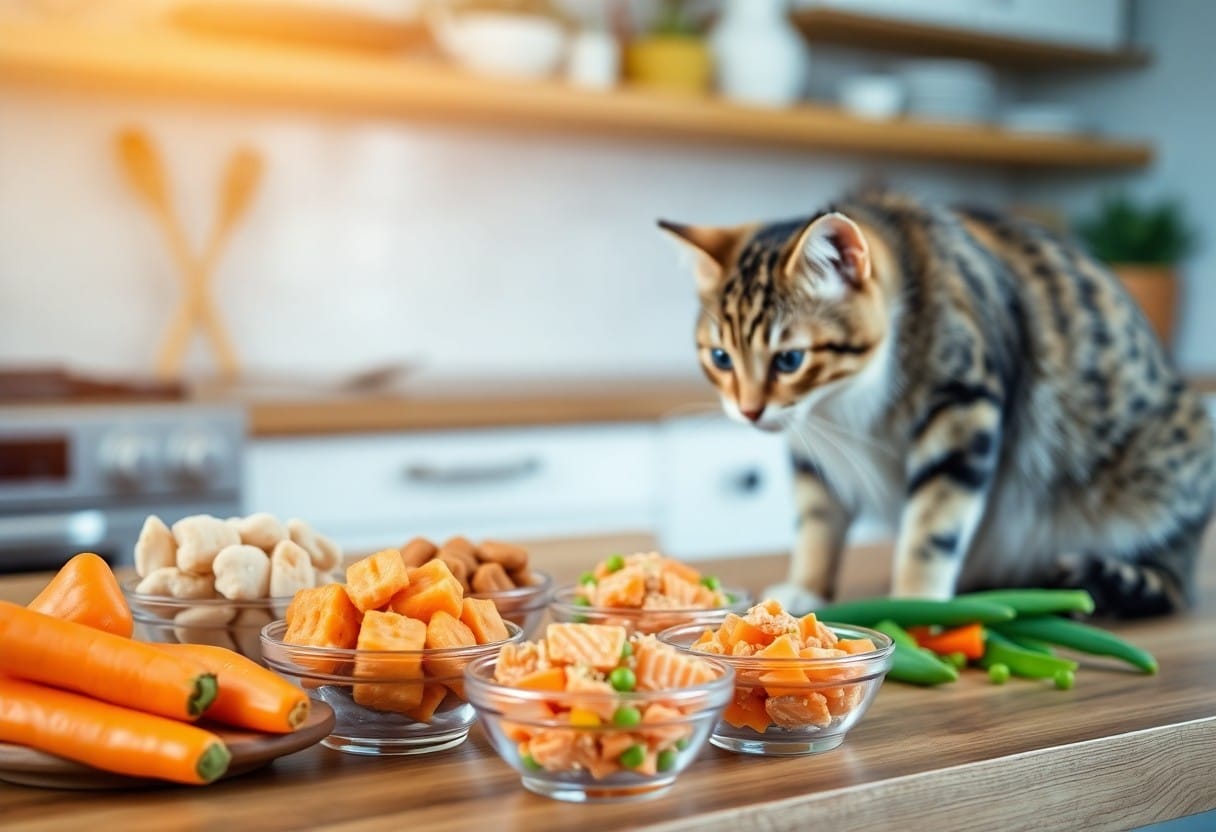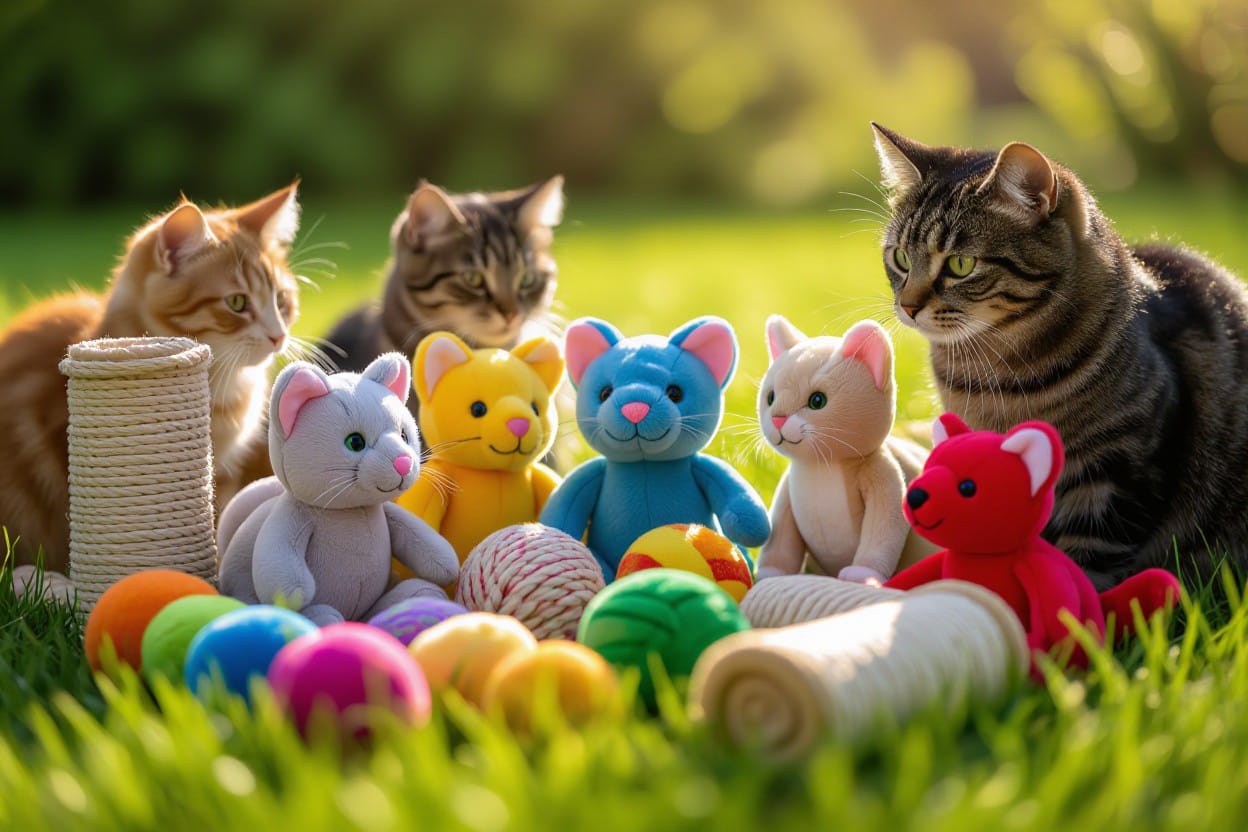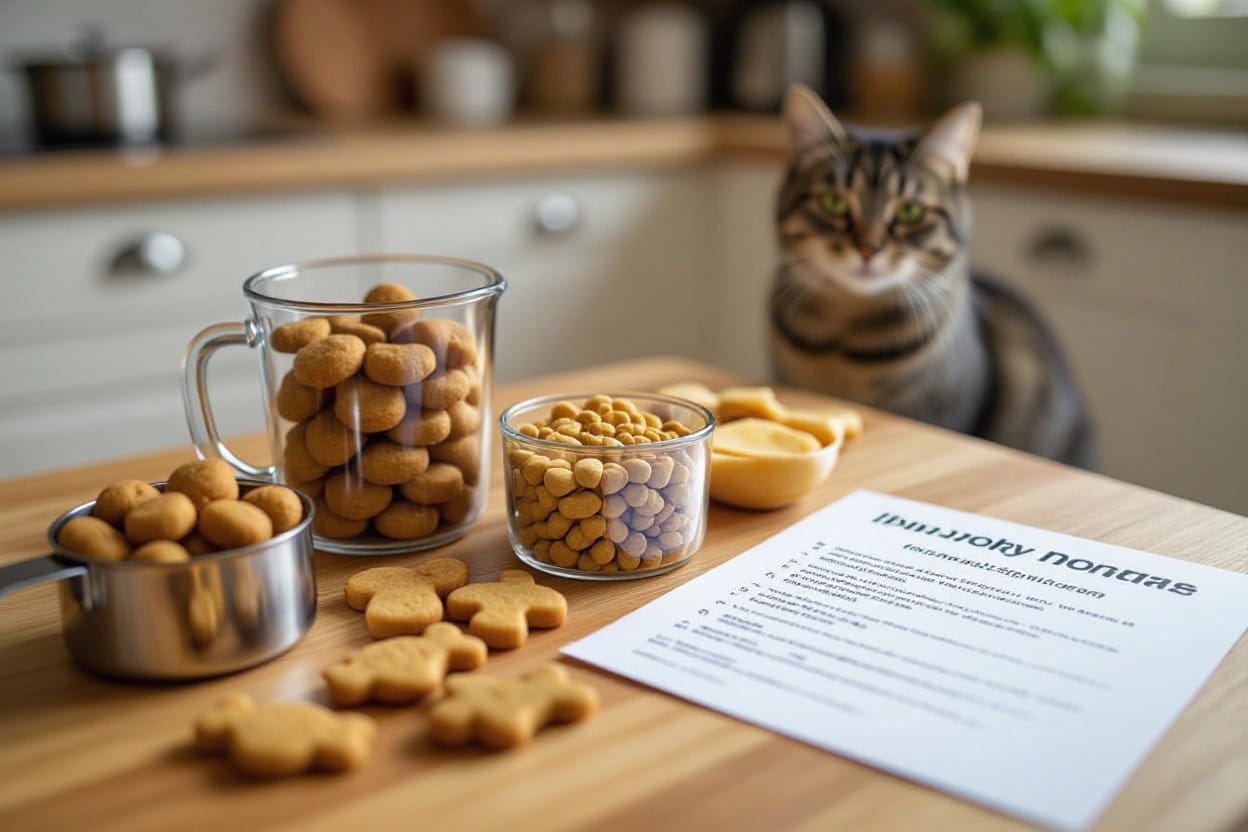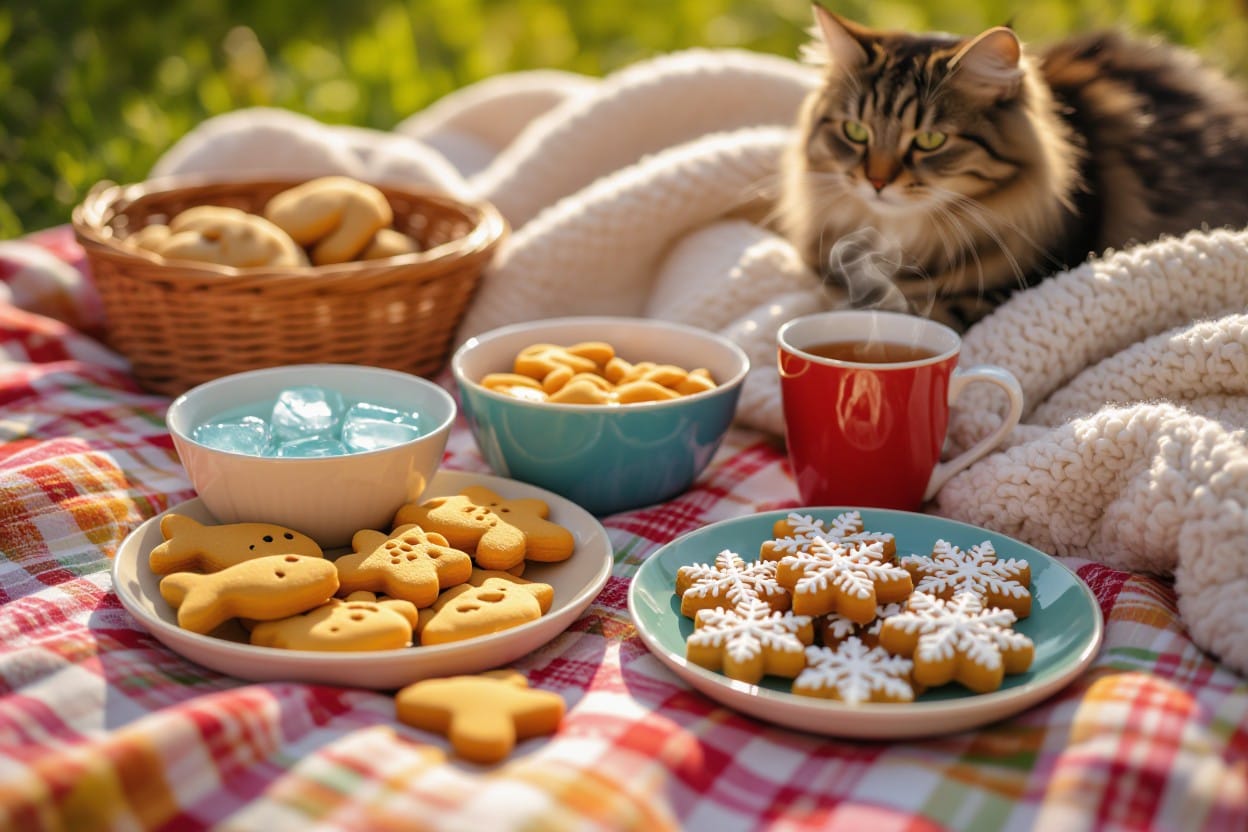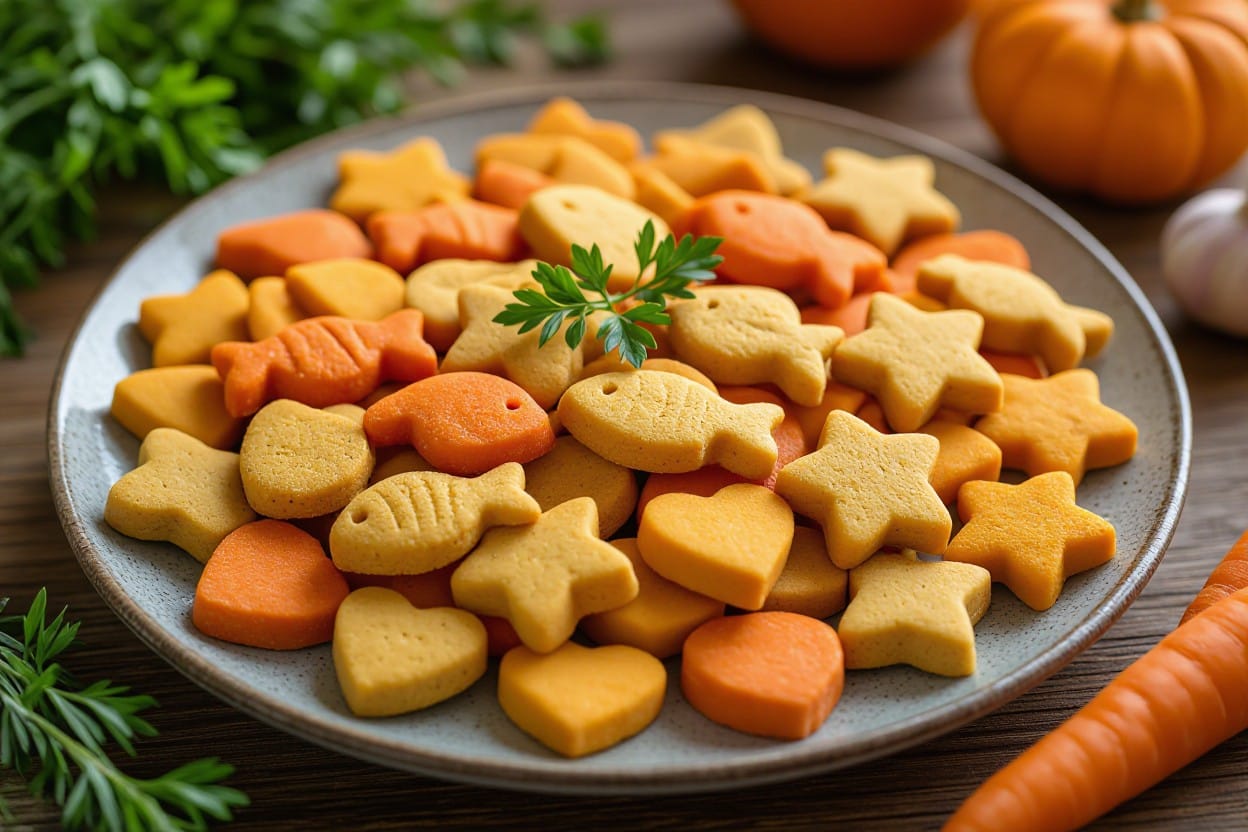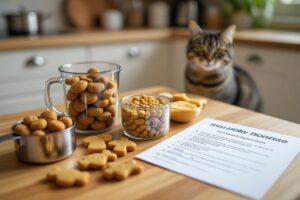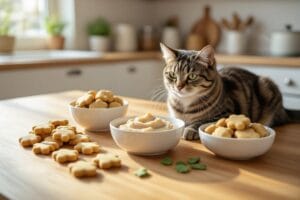Cats are not just pets; they are cherished family members that deserve the best nutrition. By creating nutritious nibbles tailored to your feline’s needs, you can ensure they thrive while also enjoying the flavor they crave. Learn how to select the right ingredients and use safe cooking techniques to whip up treats that are safe and appealing for your furry friend. This guide will equip you with the knowledge to enhance your cat’s diet and keep them healthy and happy.
Key Takeaways:
- Choose high-quality, protein-rich ingredients like chicken, turkey, or fish to ensure your cat receives necessary nutrients.
- Incorporate safe fruits and vegetables, such as pumpkin or peas, for added fiber and variety in your cat’s snacks.
- Avoid harmful ingredients commonly found in human foods, like onions and garlic, to keep your cat’s treats safe and healthy.
Decoding Your Cat’s Cravings
Your cat’s cravings can serve as a window into their dietary needs and preferences. Understanding what delights their palate goes hand-in-hand with providing a balanced meal. Pay attention to their reactions as they sample different foods; some may favor fish, while others lean towards poultry or beef. Cats are unique in their tastes, and sometimes a shift in inclinations can hint at underlying health issues. Observing these cues can help you tailor your homemade cat nibbles to ensure they are both appetizing and healthy.
The Importance of Taste and Texture
Cats are not just picky eaters; their preferences for taste and texture can significantly influence their overall happiness and health. Many felines enjoy a combination of crunchy and soft elements in their meals, as this mimics their natural hunting experiences. Incorporating varied textures can heighten sensory satisfaction, making your homemade treats much more appealing. Experimenting with different blends ensures that your kitty finds their nibbles irresistibly tasty.
Nutritional Needs: What Cats Really Want
Understanding your cat’s nutritional needs allows you to create snacks that truly satisfy them. As obligate carnivores, cats thrive on a diet primarily composed of animal proteins such as chicken, turkey, and fish. They require taurine, an vital amino acid, which is vital for heart and eye health. Incorporating fatty acids, vitamins, and minerals can enhance their overall well-being. A diet lacking in these elements may lead to health problems, highlighting the need for balanced and nutritious options.
Focusing on your cat’s nutritional requirements can simplify the snack-making process. For instance, a blend of finely shredded chicken, combined with a small amount of fish oil and a dash of catnip will not only align with their protein needs but also deliver the healthy fats they require. In fact, real meat treats can significantly boost your cat’s energy levels, and providing a variety of flavors can help maintain their interest over time. Tailoring your snacks to meet these needs means you’re giving them the flavor they crave while ensuring their health is prioritized.
Pantry Staples: Nutritious Ingredients for Feline Snacks
Your pantry can be a treasure trove of healthy ingredients for your cat’s homemade snacks. Stocking up on the right items ensures you have everything you need to whip up nibbles your furry friend will adore. Choose items like lean meats, wholesome grains, and cat-safe fruits and vegetables. Ingredients such as cooked chicken, turkey, or even fish are excellent protein sources. Don’t forget about adding a touch of healthy fats from options like fish oil or flaxseed, and you can amp up the fiber content with ingredients like pumpkin or sweet potatoes.
Proteins, Fats, and Fiber: Building Blocks of Treats
Incorporating a balanced mix of proteins, fats, and fiber is necessary for crafting delectable cat treats. Proteins serve as the foundation, with options like chicken, turkey, and tuna providing amino acids necessary for muscle development and energy. Healthy fats, including those from fish oil, contribute to a glossy coat and overall health. Meanwhile, fiber sources such as pumpkin or green beans enhance digestion and provide a satisfying texture that your cat will enjoy.
Safe Ingredients to Avoid: What’s Off the Menu
Certain ingredients simply don’t belong in your cat’s diet. Foods like chocolate, onions, garlic, and grapes can be toxic, leading to serious health issues. Always steer clear of high-sugar treats and those containing artificial sweeteners, especially xylitol, which is dangerous for pets. Additionally, dairy products may cause digestive upset in cats, so it’s wise to skip those altogether. Understanding what not to include will help you create a safe and delicious treat that your cat will love without the risk of adverse effects.
Foods such as chocolate contain theobromine, which can be fatal to cats even in small amounts. Onions and garlic can damage red blood cells, leading to anemia, while grapes and raisins have been linked to kidney failure in some pets. Even seemingly harmless items like avocados pose risks due to persin, which can cause digestive upset. Familiarizing yourself with these dangerous ingredients protects your beloved feline from harm, allowing you to confidently prepare healthy snacks that meet their needs while keeping them safe.
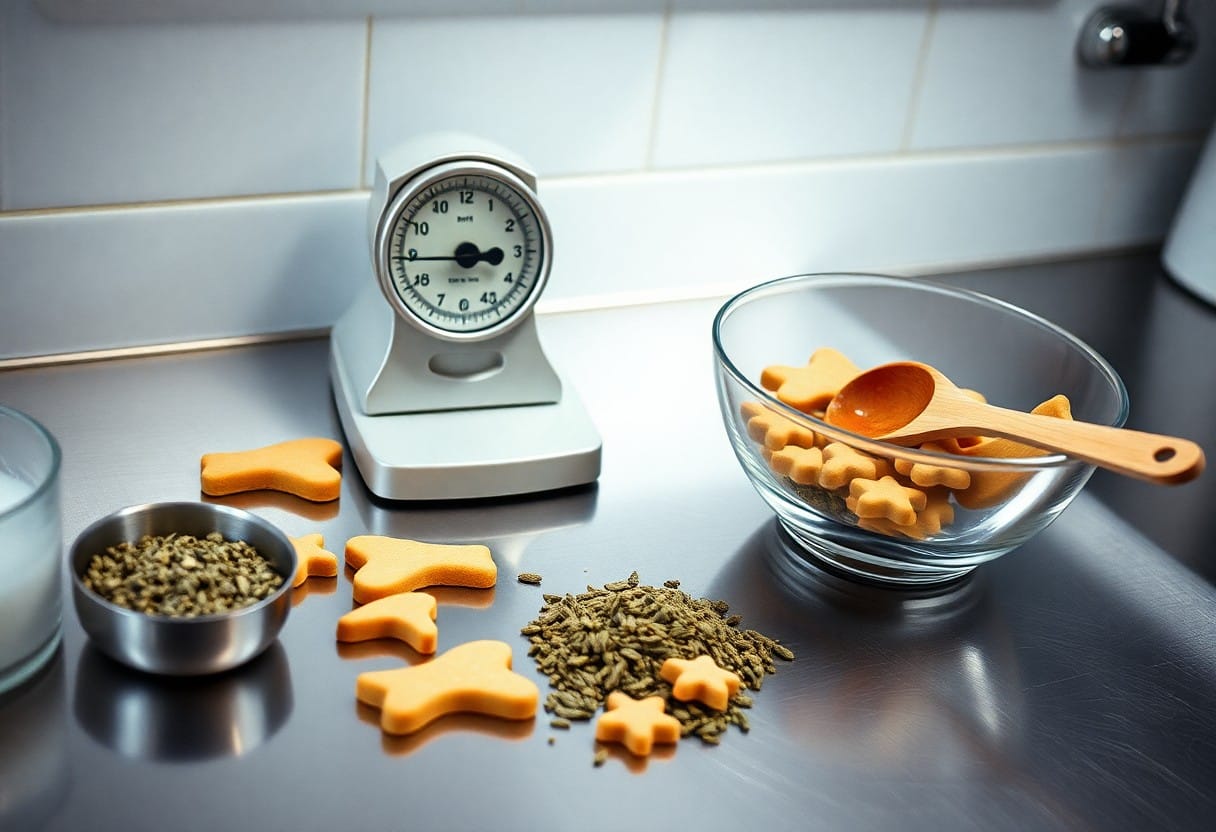
Crafting Pawsitively Delicious Treats at Home
Creating homemade treats is a fantastic way to bond with your feline friend while ensuring they receive top-notch nutrition. By using fresh, wholesome ingredients, you can whip up a variety of delectable snacks that cater to their specific tastes and dietary needs. With just a few imperative ingredients, you’ll find that making delectable cat treats at home can be both simple and rewarding, giving your furry companion something to purr about.
Simple Recipes for Homemade Delights
Start with basic recipes that require minimal ingredients yet pack flavor. Combining cooked chicken or fish with a touch of catnip and a bit of pumpkin puree can yield crunchy treats that your cat will adore. You can bake these mixtures into bite-sized shapes for easy snacking. Another quick option involves blending tuna, oat flour, and an egg, then shaping them into mini patties and baking until golden. These tasty bites not only satisfy their cravings but can also be tailored to avoid any allergens.
Flavor Combinations That Drive Cats Wild
Your furry companion’s taste buds will go into overdrive with the right flavor combinations. Cats generally relish flavors like chicken, salmon, and tuna, but pairing them with herbs like catnip, parsley, or even a sprinkle of cheddar cheese can elevate the flavor experience. For a surprising twist, consider adding pureed sweet potato for some sweetness or grated carrot for a crunch. Mixing and matching these ingredients allows you to create explosion of flavors that will keep your cat excited about snack time.
Consider the classic duo of chicken and catnip. Utilizing shredded cooked chicken mixed with a handful of catnip creates an irresistible treat cats find hard to resist. Alternatively, combining salmon with a touch of creamy plain yogurt offers a rich flavor profile that piques their interest. Experimenting with variations such as turkey or mackerel can keep things fun while ensuring your kitty receives balanced nutrition. Pay attention to their reactions and adjust the flavors to discover what truly tantalizes their taste buds.
Nutrition Beyond Treats: Balancing Your Cat’s Diet
Your cat’s diet should extend beyond the occasional treat to ensure comprehensive health. Prioritize a balanced mix of high-quality proteins, vitamins, and minerals. A typical feline diet should consist of about 70% animal protein, along with vital fats and some carbohydrates. Being mindful of portion sizes can help prevent obesity, which is becoming an increasingly common issue. Always consult with your vet to tailor a diet plan specific to your cat’s age, weight, and activity level to keep them happy and healthy.
Incorporating Snacks into Daily Meals
Integrating snacks into your cat’s daily meals can enhance their overall nutrition while satisfying cravings. Consider utilizing a small portion of their favorite treat and mixing it with their regular kibble or wet food to create an enticing meal. This method allows you to control calorie intake while encouraging your cat to enjoy a variety of flavors, leading to a more balanced diet. Just ensure that total calories don’t exceed their daily requirements.
When Cheers for Treats Become Concerns
When your cat begins to prefer treats over their regular diet, it can lead to serious health risks. This excessive indulgence may cause nutritional imbalances and contribute to issues like obesity or dental problems. Treats should only account for no more than 10% of their daily caloric intake, ensuring that your cat receives the full spectrum of nutrients necessary for their well-being. Staying vigilant about your cat’s eating habits is important in promoting a long and healthy life.
Over time, if your cat shows increased eagerness for treats at the expense of their meals, moderation becomes important. Skipping nutritious food for tantalizing morsels may not seem dire initially but leads to potential issues ranging from weight gain to deficiencies in important vitamins and minerals. Setting clear limits on how often you treat your cat fosters healthier habits, allowing you to create a diverse and enriching dining experience that promotes better long-term health.
Innovations in Cat Nutrition: Trends to Watch
As pet owners increasingly prioritize their cats’ health, innovations in cat nutrition are gaining momentum. The evolution of ingredients, formulations, and delivery methods means that you now have access to a plethora of options designed to enhance your feline’s diet. From personalized meal plans to nutrient-dense snacking solutions, these trends are making it easier for you to ensure your cat’s well-being while satisfying their cravings.
The Rise of Functional Ingredients
Functional ingredients are becoming a popular choice among cat treat manufacturers, as they focus on more than just flavor. Ingredients like probiotics, omega fatty acids, and antioxidants not only promote overall health but can also address specific health issues. Implementing treats that are enriched with these components ensures you’re providing your cat with enjoyable snacks that support their well-being every day.
Sustainable Choices: Eco-Friendly Treats
Eco-friendly treats are on the rise as both consumers and brands recognize the importance of sustainability. By choosing treats made from locally-sourced, organic ingredients and packaged in recyclable materials, you’re helping to reduce your environmental footprint while giving your cat a tasty reward.
Opting for eco-friendly cat treats does more than just feel good; it supports a sustainable industry that prioritizes ethical sourcing and environmental responsibility. Many brands are shifting to biodegradable packaging and utilizing sustainable fishing practices to source fish-based proteins. By incorporating these treats into your cat’s diet, you’re contributing to a healthier planet while also meeting your feline’s nutritional needs. Look for labels that highlight certifications or sustainable practices to ensure your choices align with your values.
To wrap up
Hence, by selecting fresh ingredients and following simple recipes, you can easily whip up nutritious nibbles that your cat will love. Tailoring these treats to their specific dietary needs ensures they remain healthy and satisfied. Experiment with different flavors and textures to keep your feline friend engaged, while also fostering a stronger bond through homemade care. With a little creativity and attention, your homemade treats can enhance your cat’s eating experience and contribute to their overall well-being.
FAQ
Q: What ingredients can I use to make nutritious snacks for my cat?
A: Cats are obligate carnivores, so the best ingredients include high-quality proteins like cooked chicken, turkey, or fish. You can also incorporate small amounts of vegetables like peas or pumpkin, as they offer fiber without overwhelming their diet. Using plain yogurt or egg can add additional nutrients, but always ensure these ingredients are safe for your furry friend.
Q: How can I ensure the snacks I make for my cat are safe and healthy?
A: To make safe and healthy snacks, stick to ingredients specifically safe for cats. Avoid toxic foods such as onions, garlic, chocolate, and anything with artificial additives or sugar. Always check with your veterinarian for recommendations on portion sizes and any dietary restrictions your cat may have. Preparing snacks with fresh, whole ingredients will help maintain your cat’s health and well-being.
Q: What are some simple recipes for homemade cat treats?
A: Here are a couple of easy recipes you can try: 1) Tuna Treats: Mix one can of tuna in water (drained), 1 egg, and a tablespoon of whole wheat flour. Bake at 350°F for about 10-12 minutes, cool, and serve as bite-sized treats. 2) Chicken Bites: Shred cooked chicken and mix it with a bit of pumpkin puree and a sprinkle of catnip. Form small balls and refrigerate so they firm up before serving. Your cat will love these tasty nibbles!
